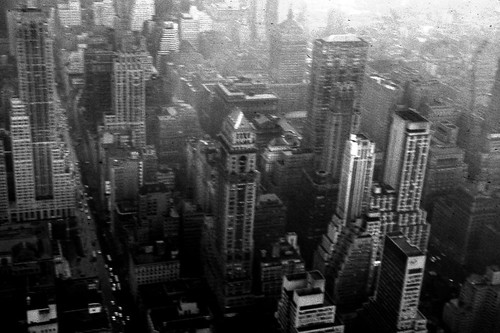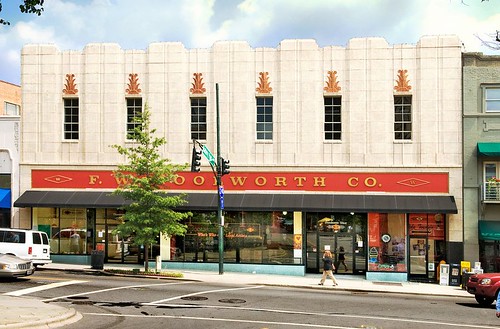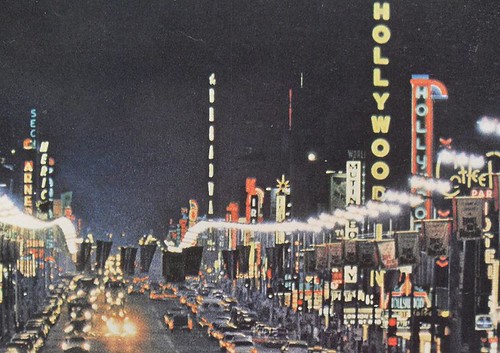Imagining cities as a kid growing up in the Bible Belt

Posted September 28, 2011 at 1:25PM
My friend Chuck Wolfe has written a terrific essay called “Rediscovering the Urban Eye of a Child,” on his blog myurbanist. An astute observer of cities and a gifted photographer, Chuck traces his roots for both, recalling trips as a child to cities abroad with his father, an urban planning professor. He includes with the post a number of photos he took as a 12-year-old in what looks to me like a Mediterranean city. If the colors have lost some oomph over the years, those photos remain well-composed and, as Chuck writes, reflective even then of the urbanist attributes he values today such as public spaces with character, pedestrian-first places, and textures of historic architecture.
Knowing Chuck a little, I’m not surprised to learn that he was a precocious and observant kid, but his assimilation of urban wisdom from his father at that age is unique among my acquaintances. Continuing the tradition, it sounds like Chuck’s daughter and son may be falling in his footsteps now, in their own ways of course.
It fascinates me that Chuck and I sort of ended up at the same place (lawyers who love cities, sustainability and visual expression). Our backgrounds could not have been more different.
As a kid living with working-class parents in a small, sleepy southern city, I mostly imagined - rather than experienced - larger, historic cities of consequence. I was in my late 30s before I could afford a trip to Europe, and I am quite sure I did not know there was such a thing as urban planning until almost as late. My parents had tons of smarts and great instincts, but no higher education, and I was pretty much on my own for finding my way into college, then law school, and eventually a profession. I made it up as I went along.
My hometown of Asheville was hardly without its merits, most of all being smack in the middle of the majestic southern Appalachian Mountains, with the Blue Ridge to the east and the Great Smokies to the west. We could get to a mountaintop picnic area or trail faster than I can now get to work, and I loved it (while taking my unique natural surroundings for granted, of course, as kids are wont to do). When not exploring nature, chances are I was playing tennis, teaching myself guitar, or spending time with various church youth groups, because that’s sort of what you did in that time and place.
We did have a smallish downtown, though, and instinctively that’s where I wanted to be on a Saturday if I wasn’t doing one of those other things. When I was around the age when Chuck took his photos, I would hop on the city bus, take myself down there, and hang out. I loved the city library, the small park and square, the Woolworth’s, the movies, the music store. Downtown, sleepy though it was, seemed like a place where important things happened, where grownups more important than me did . . . what, exactly? I never bothered with that part.
I suppose that, most of all, downtown Asheville was a place where there were people, shopping or whatever. As a de facto only child (I wasn’t, technically, but that’s a very long story) of two working parents, I was alone a lot of the time, well before the phrase “latchkey kid” became popular; hanging out in a place with a bit of liveliness mitigated that problem.
So, in my own way, I had stumbled upon some of the amenities that even small-city downtowns, if they are good ones, can provide: animation, a lot of optional activities close at hand, the possibility of a chance encounter with a friend or interesting stranger.
(Some readers may now know Asheville as a popular destination town of character and creativity - as it was once before, around the turn of the 20th century and a couple of decades thereafter. But I grew up there in between its heydays. Church socials were where it was at.)
My forays into our city center notwithstanding, “real” cities were things I only saw on TV, or occasionally heard about from distant relatives who, for reasons still not clear, actually lived in Manhattan. In my mind, New York was very tall, exotic buildings and lots of stores and bright lights. A subway! Los Angeles was Disneyland, the beach, cool-looking freeways, and Hollywood. Cleveland was a place with a baseball team whose games one could listen to late at night when the clear-channel radio stations came in.
These imagined places were about as far from my reality as one can imagine, which may be why I was drawn to them so strongly (in addition to the fact that all the people on TV who supposedly lived in them seemed so cool). I now have friends and colleagues who actually grew up in Manhattan, and honestly I have a hard time conjuring what it was like for them, since to me real cities seemed for grownups, not kids.
There was one immensely important, in-person experience I had relating to these big cities. When I was 10, I think, maybe 11, I took a trip to Los Angeles to visit a relative. I actually went alone, changing planes in Atlanta, with the airline alerted to look after me. It was pretty awesome, especially Disneyland and the freeways, along with a moonlit horseback ride that seems unfathomable in today’s LA. Later that summer – or was it the next? – my mother took me to New York City to visit different relatives. It was an all-night bus ride to DC, where we changed to the train for New York. All the tourist sites were exciting and, being the nerdy kid that I was, I wanted to see the United Nations. I still have a little blue UN flag from that trip. These short visits provided still more fuel for my imagination.
And imagination it remained; there were no more big cities for me until I went off to college in Atlanta. In fact, one can understand my life’s quest, in a way, as a journey seeking to attain those cities of my child’s imagination.
When in Atlanta, I soaked up everything the city had to offer that I could afford, and quite a few things that I couldn’t, now that I think about it. Atlanta had a lot to offer in those days, making its own transition from a sleepier place to an exciting one where businesses were booming and where everyone wanted to be, before downtown was largely abandoned and the whole place choked to death by sprawl. It was a great time to be there. Next came DC for law school, which actually wasn’t so great in those post-riot years; but I stayed, and over time I’ve been able to watch Washington become the great international city that it is now. And, of course, I’ve now also had lots and lots of travel to more and more cities.
I suppose that, all along the way, I’ve been picking up bits of information and clues about what makes cities great. I’ve never had any formal training in that, and didn’t really have any professional connection to these issues, either, until late in my career. Unlike Chuck, I’m basically a self-taught urbanist.
To bring this piece of writing back home, I’m still making my own way, really, just as I did as a kid in the South 40+ years ago. I didn’t so much learn from my forebears and childhood urban experiences, as Chuck did, but from my curiosity, and from a sense that life could be better. That’s now the quest that a whole bunch of people I am honored to call friends and fellow urban travelers are on.
For those who love music and have a little time, I'll leave you with a song that captures the kind of small city downtown feel that I grew up with about as well as any I know. Nanci's voice may be an acquired taste for some, but her songwriting and musicianship are impeccable by anyone's standards:
Move your cursor over the images for credit information.




